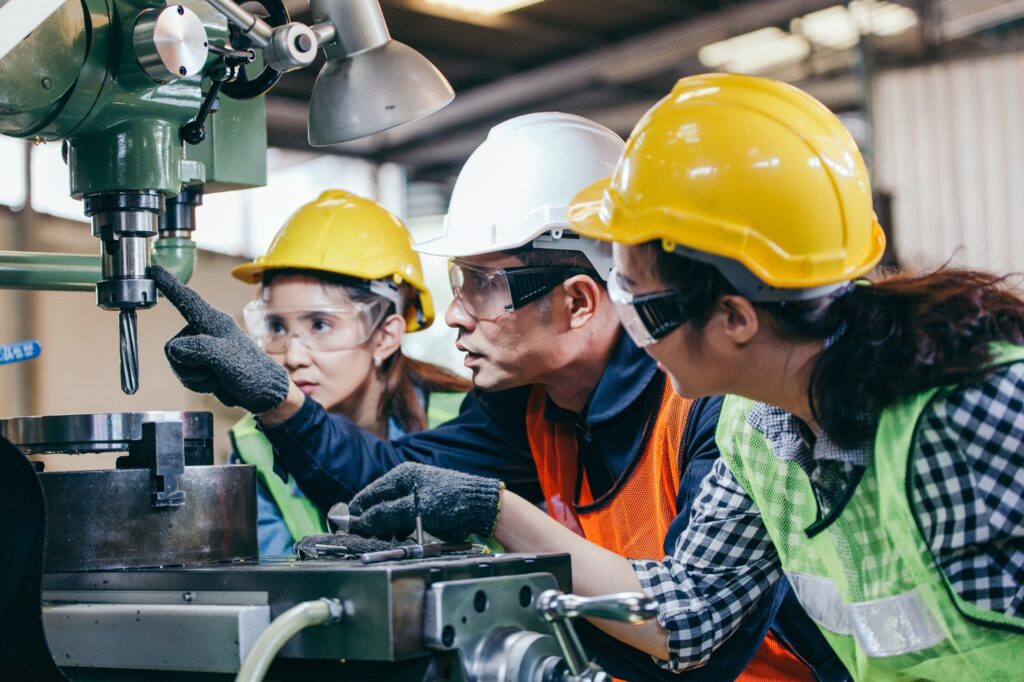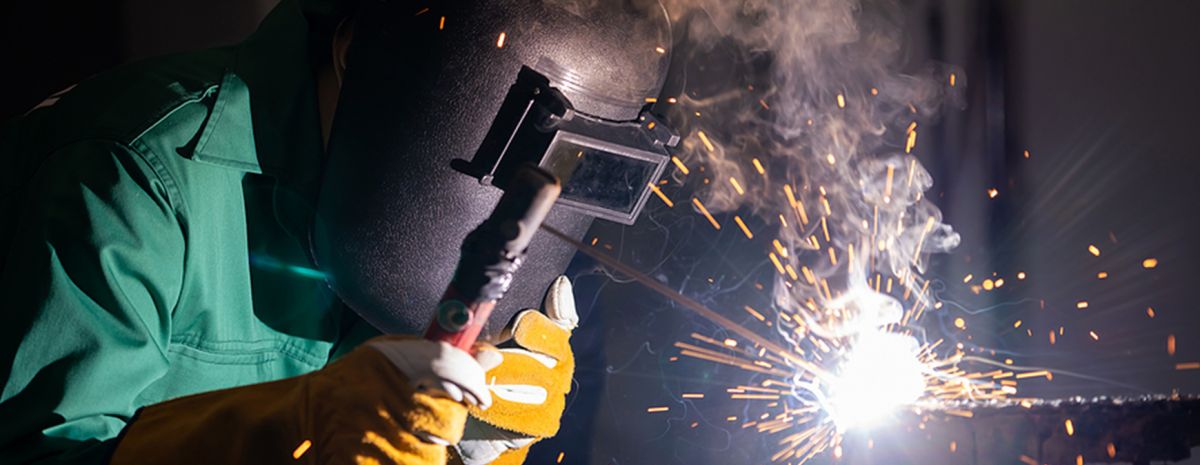TWS is a Great Training Option for Everyone
Learn more about how we can prepare you to advance your career.
Stick welding, officially known as Shielded Metal Arc Welding (SMAW), is one of the most commonly used welding techniques for pipe connections. SMAW materials are well-known for their simplicity and portability which makes stick welding easier to learn and relatively inexpensive.
In contrast to other welding methods, stick welding doesn’t require any shielding gas or flux.
Trades professionals use this popular welding method to join pipes for various applications such as construction sites, gas and oil stations, and fabrication shops.
Despite being one of the simpler and less-demanding welds, SMAW still requires precision and attention to detail for successful results. Let’s review 5 stick welding tips welders can use for optimized performance.
Have You Considered a Career in the Skilled Trades?
Fill out the form to recieve a no obligation info packet.
1. Follow the necessary safety precautions.
Welders face a variety of potential dangers in their line of work, including blinding light, extremely elevated temperatures, and heavy objects.
These unavoidable hazards make it essential for professionals in the welding trade to take necessary precautions to diminish the chances of injury and improve the quality of their work.
After all, ignoring basic safety procedures can increase the chances of mistakes. Although stick welding safety tips vary between projects, welders should have the following materials when stick welding:
- Heat-resistant gloves
- Protective goggles
- Safety shoes
- Non-flammable clothing
- Ventilation fan
- Fire extinguisher
2. Take time to prepare effectively.
Even the most talented stick welders can fall short of their goals when they don’t take the time to prepare. This initial setup phase will set the tone for the entire weld.
Although a proper setup for stick welding will vary between each project, here are some key elements to take into account before striking a weld:

New: Industrial Maintenance
Learn About Our New Advanced Industrial Maintenance Program
Tulsa Welding School is proud to announce our newest program offering available at our Houston & Dallas Metro Campuses – Advanced Industrial Maintenance Technology! Learn the skills you need to take on the industries of manufacturing, distribution, energy production and facility maintenance in as few as 7 months.
- Choosing the right type of steel for stick welding.
- Clearing the piping of any dust, dirt, or other imperfections.
- Picking the correct electrode for the job.
- Getting in a comfortable and manageable position.
This isn’t an exhaustive list, but still highlights the importance of taking time to prepare the space before getting started.
3. Remember CLAMS.
No, we’re not talking about the delicious shellfish. CLAMS is a handy acronym designed to help welders remember the fundamental parameters of a great stick weld. This learning hack is a great way to commit the basics of the SMAW technique to memory. Here’s what CLAMS stands for:
Current Settings
Current settings determine the amount of amperage powering a welding stick. Each project requires different current settings, so it’s important to adjust the amperage accordingly. Mismatched currents can lead to sticky electrodes when the power is too low or excessive fluid when the power is too high.
Length of Arc
Arc length is another crucial factor in producing better stick welds. An arc that’s too long increases the production of spatter while an undersized arc becomes extinguished or causes high-crown welding beads. A good rule of thumb to follow is to choose an arc length that’s no larger than the electrode’s core.
Angle of Travel
The position of the electrode during a weld has major implications for the weld quality. Vertical welding requires welders to push while tilting the electrode 0 to 15 degrees away from the travel direction. On the other hand, the electrode needs to stay perpendicular to the pipe with a 5 to 15-degree tilt towards the direction of travel when horizontal welding from left to right.
Manipulation
Manipulation simply refers to how welders use an electrode to create the weld. There are different styles of manipulation, and every experienced welder develops their own technique. Green welders can simply copy the work of seasoned veterans to get a feel for what works before settling on a technique.
Speed
When the welding stick is used at the perfect speed, the weld should have a well-developed crown and moderate width. Welding too slowly produces flatter, wider welds while moving too quickly results in shallow, convex-shaped beads. It’s important to keep the arc on the edge of the welding pool throughout the weld for optimum results.
4. Keep an eye out for common mistakes.
A critical part of mastering the stick welding technique is being able to identify common mistakes and make necessary corrections. The quicker you can catch an issue, the better chance you have of improving the weld. Let’s review some of the most common SMAW problems to keep an eye out for along with their likely causes.
An undercut develops.
An undercut is when there’s a concave in the weld between two joined pieces of pipe. This groove reduces the strength of a SMAW weld. In this situation, the amperage might be set too high causing a crater to develop.
Arc doesn’t start consistently.
Arcs should start strong and consistently when stick welding. If you’re having trouble getting the arc to start, try turning up the amperage to produce a more powerful arc.
Too much splatter.
Having excess splatter can quickly ruin an otherwise solid stick weld. There are several potential causes, but the most common culprits are using an excessively long arc weld or too high amperage.
Misshaped weld bead.
A well-executed SMAW technique produces a welding bead roughly 2.5 times the electrode’s diameter. A bumpy weld bead could result from slow pulling or low amperage. Conversely, thin weld beads can develop from pulling too quickly.
Suggest Reading: Do you push or pull when stick welding?
5. Get familiar with different stick welding positions.
What is the best way to stick weld? Well, it depends. SMAW is a dynamic and versatile pipe welding technique that’s applicable in a variety of settings. Over time, various stick welding positions have developed to tackle different welding challenges. Another of the best stick welding pipe tips is understanding and mastering these different welding positions.
Horizontal – One of the most straightforward stick welding positions sees the welding axis resting horizontally.
Vertical – As the name suggests, the axis of a vertical weld is vertical. There are specific vertical stick welding tips that help welders deal with falling molten metal.
Flat – Also known as downhand welding, this position sees welders working on the topside of the piping joint with the axis of the weld running parallelly through the weld’s length.
Overhead – As one of the most difficult stick welding positions, overhead welding requires trades professionals to operate from the underside of a pipe joint.
Interested in learning what you can do with a welding certificate? Read about the types of welding careers you can pursue with your welding skills. Ready to start the Professional Welder program? Contact us today.
This blog has been labeled as archived as it may no longer contain the most up-to-date data. For a list of all current blog posts, please visit our blog homepage at https://www.tws.edu/blog/







